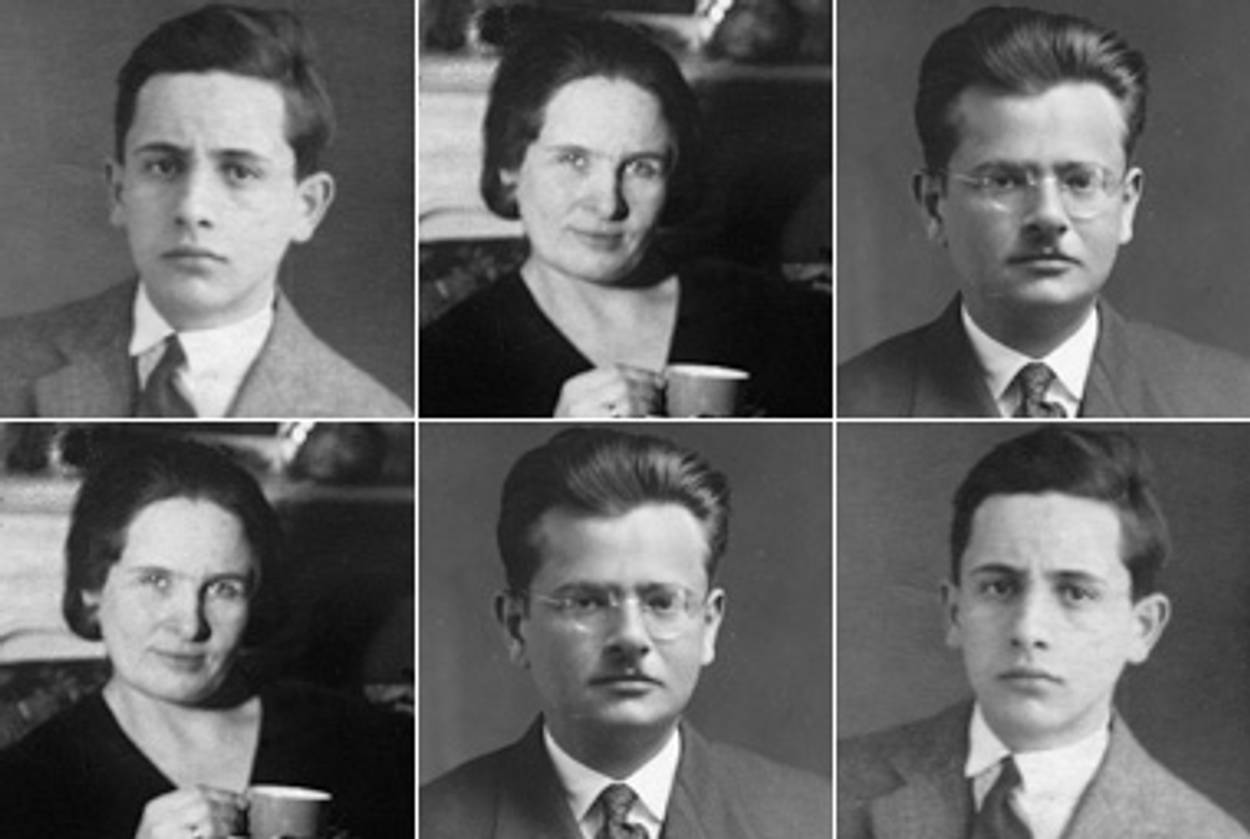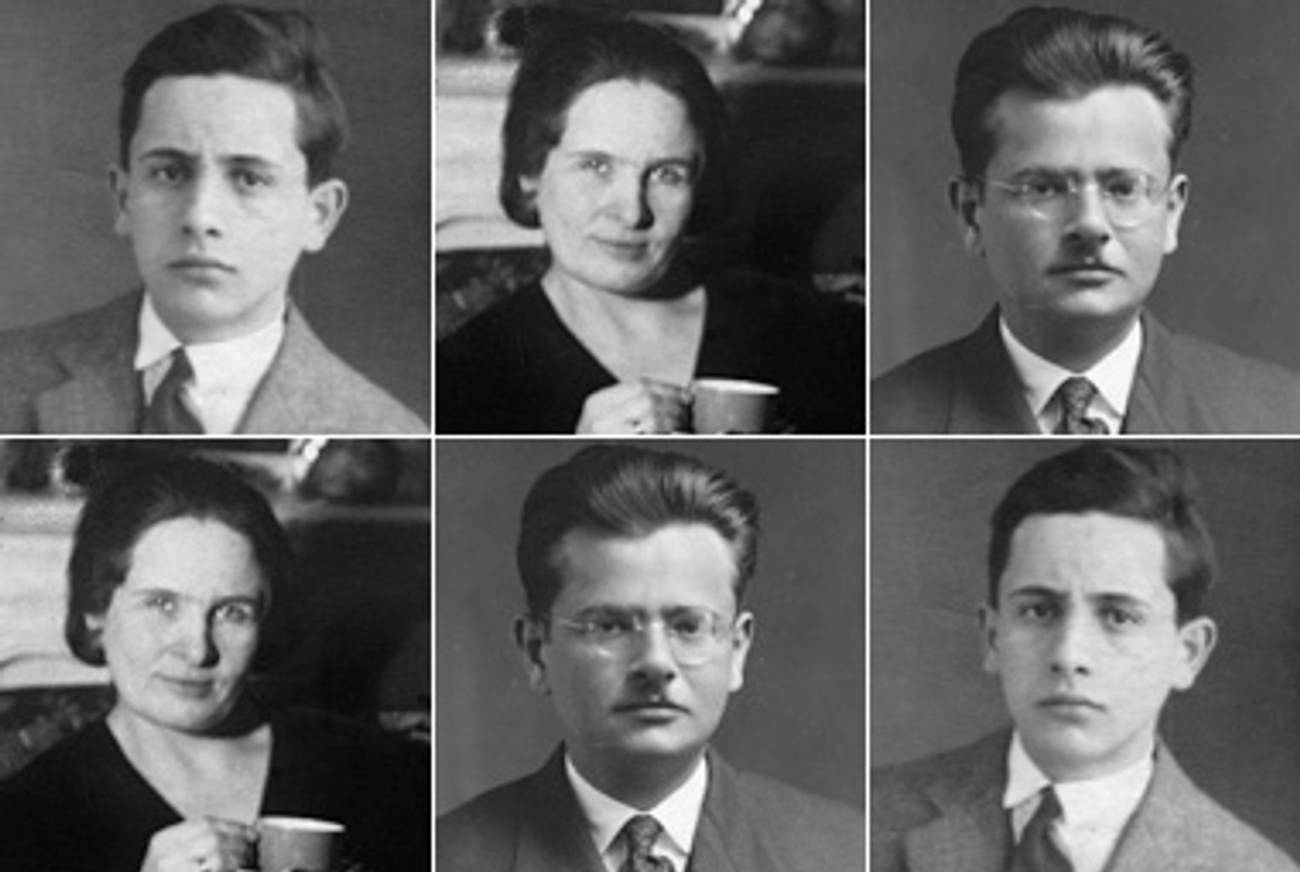Epistolary Bromance
The letters exchanged by Elias Canetti, his wife, and his brother reveal the artist’s self-absorption




One of the most memorable episodes in Elias Canetti’s autobiography comes in the second of its three volumes, The Torch in My Ear, in a section titled “The Blowup.” In Canetti’s relationship with his mother, he makes clear, there was no shortage of blow-ups: from the time of his father’s sudden death, when Canetti was seven years old, his mother was the dominant and domineering presence in his life, an emotional tyrant whom the boy adored and resented in equal measure. But “the” blowup—the one that was so devastating that, Canetti writes, “I have never spoken about it since then”—came the day before his 20th birthday, in 1925. Canetti had been planning a hiking trip with a friend, when at the last moment his mother vetoed it, declaring that “it was out of the question, she had no money for luxuries.” This arbitrary, but as it seems fairly minor, injustice sent the teenager into a demented rage:
I wanted to beat my hands on the walls, but I controlled myself to prevent any physical outburst in front of my brothers…. I grabbed a huge, almost new pad of writing paper and covered page after page with gigantic capital letters: ‘MONEY, MONEY, AND MONEY AGAIN.’ The same words, line after line until the page was full. Then I tore it off and began the next page with ‘MONEY, MONEY, AND MONEY AGAIN.’… The pad had a hundred sheets; I covered each single page with my writing.
This ingenious form of lashing out had the desired effect. His mother panicked and called a psychiatrist, who advised her to let Canetti take his trip, explaining: “The issue is not money. It is an Oedipus complex.” (As Hannah Arendt remarked, the Oedipus complex might not be a universal truth about human nature, but it was an inescapable feature of family life among Jews in Freud’s Vienna.)
Reading Dearest Georg—the strangely compelling new collection of letters exchanged by Elias Canetti, his wife Veza, and his younger brother Georg—the writer’s teenage mad scene keeps coming to mind. By the time he died, in 1994, Canetti was an intimidating figure in the world of letters, thanks in part to his famous egotism and ambition (the English critic John Bayley, whose wife Iris Murdoch had been Canetti’s lover, referred to him as “the godmonster of Hampstead”). Though he has never been widely read in the English-speaking world—in part because his major works are so disparate, including the novel Auto-da-Fé, the sociological treatise Crowds and Power, and the memoir—Canetti seemed to incarnate a lost tradition of Central European Jewish intellectuality. Surely it was in part for this reason that he won the Nobel Prize, in 1981.
Yet in these letters, written before Canetti had achieved fame, we often see him acting just like that frustrated 19-year-old—flaunting his suffering, in order to blackmail his loved ones into doing what he wanted. We see him, rather than hear him directly, because despite the book’s subtitle—“the letters of Elias, Veza, and Georges Canetti”—there are only a few letters here by Elias, and nearly as few by Georges (as Georg became when he moved to France). Whatever letters Georges wrote to Elias were destroyed, along with most of Elias’s correspondence; while Elias’s perpetual failure to write to Georges, despite his best intentions, is one of the constant refrains of this book.
The voice we mainly hear in Dearest Georg, then, belongs to Veza Canetti—appropriately enough, since she was the one who kept the brothers’ relationship intact. Veza’s letters to Georges, discovered among Georges’ possessions after his death, come in two series. The first runs from 1933 to 1938, when Nazi Germany’s annexation of Austria forced Elias and Veza, as Sephardic Jews, to flee Vienna—first to Paris, where Georges lived, then to London, where they would remain for decades. During World War II, of course, correspondence between London and German-occupied Paris was impossible, and the letters do not resume until October 1944, after the liberation of France, continuing until 1948.
The letters document the lives of three highly intelligent people—Veza, like Elias, was a writer, though she subordinated her work to his; Georges was a medical researcher at the Institut Pasteur—living through one of the most politically tumultuous eras in European history. As Jews, the Canettis had to be especially attuned to public events. Veza and Elias were refugees from Hitler, and the extended Canetti clan lost many relatives and friends to the Holocaust. Elias Canetti’s work can be seen as a lifelong engagement with the meaning of Nazism and the Holocaust.
Yet one of the most striking things about Dearest Georg is how seldom politics or public events are mentioned. This is largely because Veza lives so completely in the vortex of Canetti (as she always refers to her husband)—his writing, ambition, reputation, neurosis, need—that the outside world practically disappears. Thus on March 2, 1938—in the middle of the diplomatic crisis that would lead to Hitler occupying Austria—Veza actually invites Georges to visit her and Elias in Vienna: “At Easter time we’ll both be here and expecting you! We won’t let you escape!” Elias himself, writing to Georges a few weeks earlier, is still more oblivious and self-absorbed: “The very best thing would be if you could be in Vienna by March 3, when the Werkbund has invited me to give a big public lecture on the topic ‘Saving the Theater’… It is a great honor for many reasons.”
In fact, Elias’s pursuit of literary “honor,” and the attitude of Georges and his other family members to that quest, constitutes the main theme of the first series of letters. During the years 1933-1938, Canetti published his first book, Auto-da-Fé (its original German title is Die Blendung), and began to win a reputation. But before the novel appeared, his family treated him as a mere sponger and idler, and even after his success he remained financially dependent on them. Elias and Veza’s letters to Georges, when he was still a medical student, are filled with imperious requests for money. When Georges dares to object, Elias rebukes him loftily: “I ask only one thing of you: don’t preach at me and don’t be petty … you ought not to make my already not very pleasant situation even more difficulty by philistine admonishments.”
There is something admirable about Canetti’s absolute commitment to his art. It is a style of unworldliness that is quite out of fashion today, in part because the economy of literature has changed (today, a young writer working on his first novel wouldn’t risk starvation—he’d just go to an MFA program). In part, too, Canetti’s quasi-religious worship of art, so characteristic of the German-speaking Jewish bourgeoisie, has lost much of its appeal.
Still, it is clear how annoying Elias’s loftiness must have been to Georges—who, when not cramming for medical school, was in a sanitarium trying to recover from tuberculosis. One of Georges’s few surviving letters, from March 1946, shows how much resentment was boiling below the surface. After receiving the latest of Veza’s many reports on Elias’s infidelities (he was obsessed with Friedl Benedikt, a fellow exile and writer), Georges erupts:
He is frightful…. His complete lack of clarity and self-control, his weakness in the face of resistance, his miserable obsession with something so foolish (compared with everything we’ve been through the last 6 years), his repulsive egocentricity, his alcoholic intoxication…. I find all this pitiful trash terrible, worse than I can tell you…. And this is my brother? But this is not a man, it’s a rag, a doormat you can treat any way you want! And this after all the years of terror in which even the biggest fool grasped what was really important.
The reader, faced with the unending psychodrama of the Canetti marriage, is often tempted to say the same thing. Nor is it Elias alone who seems culpable. Over the years, Veza develops an extraordinary tone in her letters to her brother-in-law: cajoling, flattering, at times almost amorous, yet also melodramatic and full of self-pity. (A constant refrain in her postwar letters is that she is afraid to see Georges again in person, since she doesn’t want him to discover how old and fat she’s become.) And for all her complaints about her husband, she is also his champion and enabler: “if I don’t succeed in reconciling you to seeing him like I see him,” she writes Georges, “if you don’t love him, if you don’t come here to see his two thousand pages neatly written and locked up here in my library … then I’ll never have the courage to live on. Really I shan’t.”
Spending so much time in the company of these obsessive, manipulative people is not the most pleasant reading experience. Yet by the end of Dearest Georg, you are at least left with an unforgettable sense of the individuality of Elias, Veza, and Georges Canetti; of the passion of their commitment to art; and of the dreadful strength with which human beings cling to their private hopes and fears, even or especially when history seems to render them trivial.
Adam Kirsch is a poet and literary critic, whose books include The People and the Books: 18 Classics of Jewish Literature.
Adam Kirsch is a poet and literary critic, whose books include The People and the Books: 18 Classics of Jewish Literature.